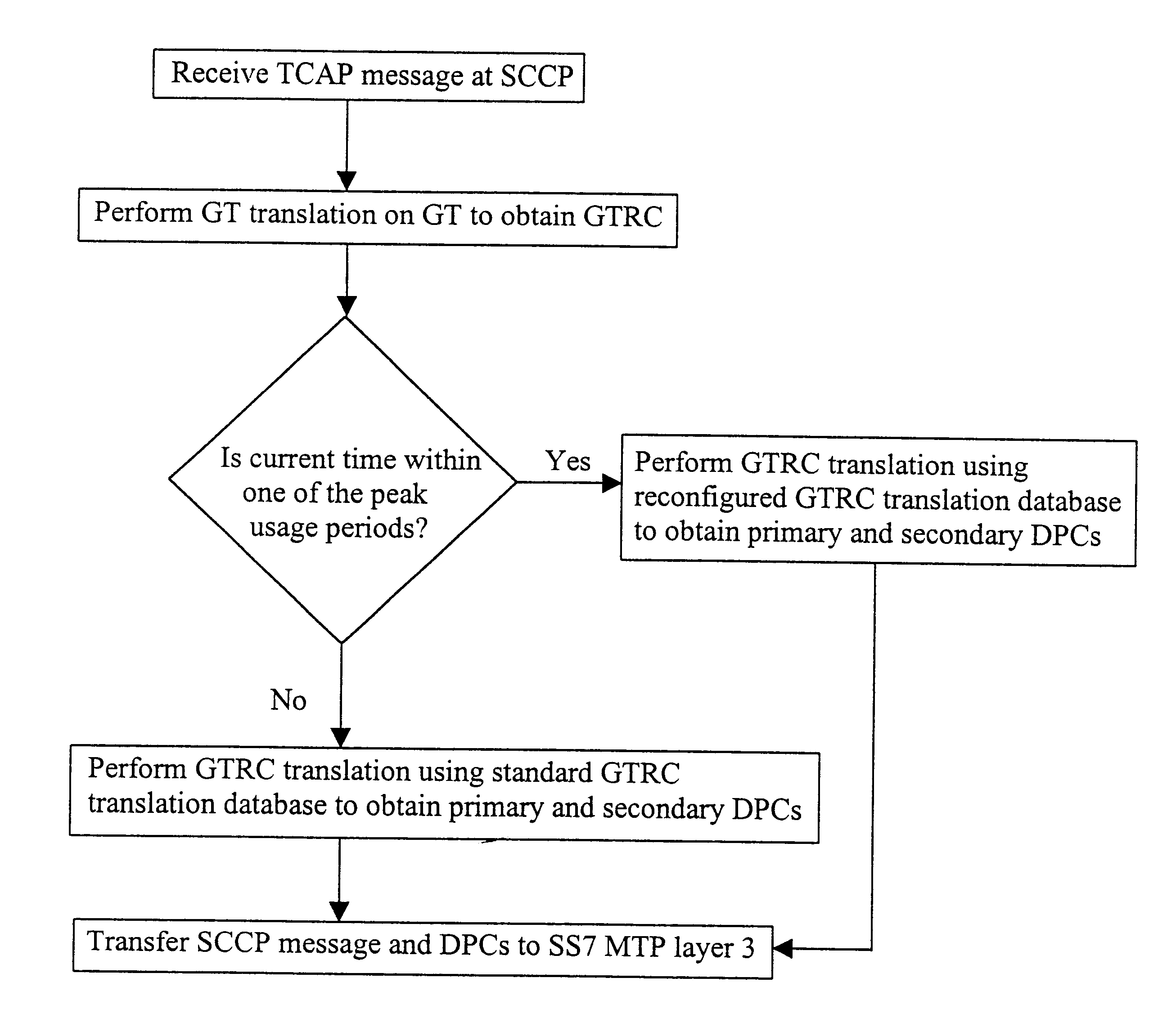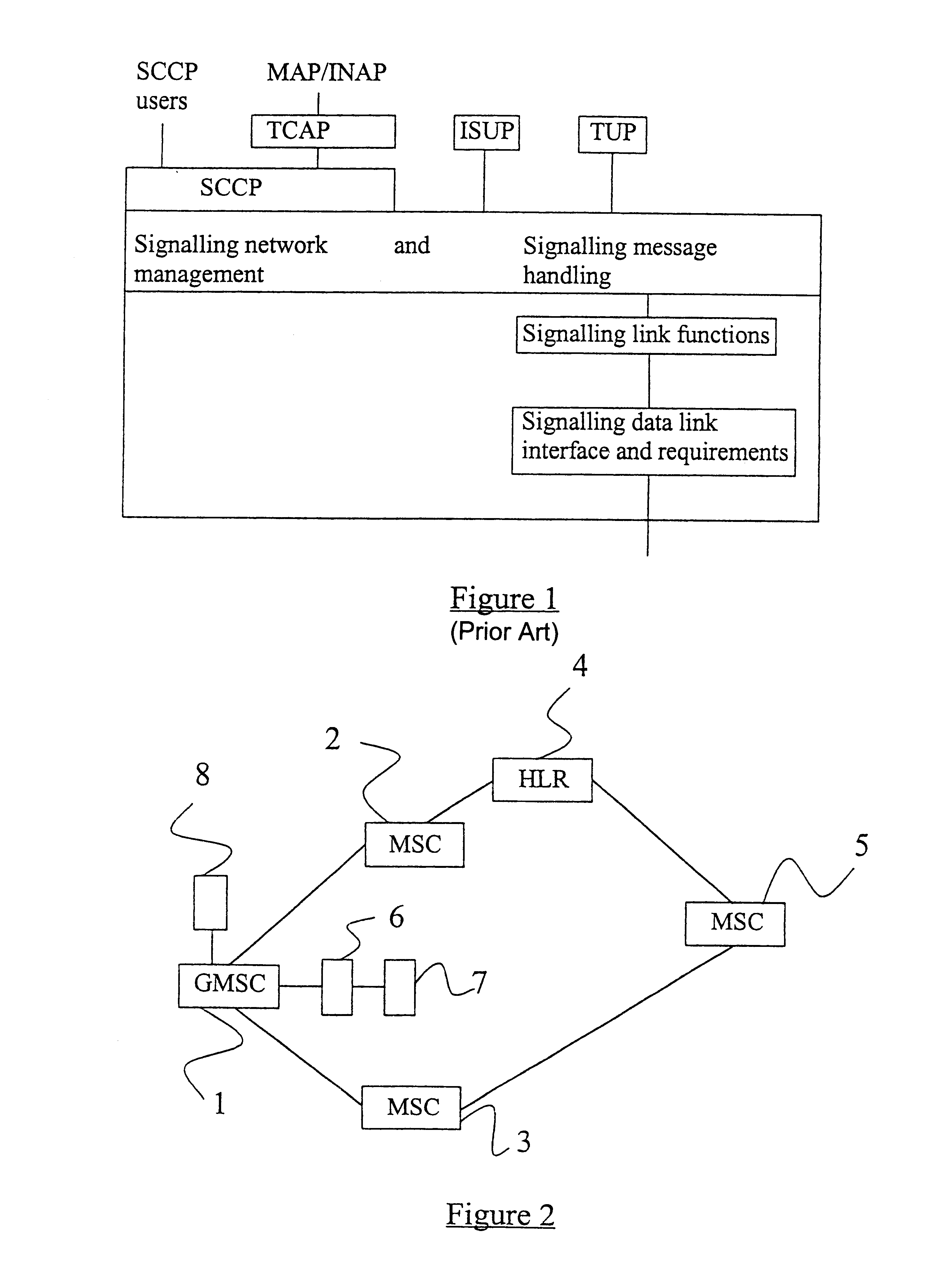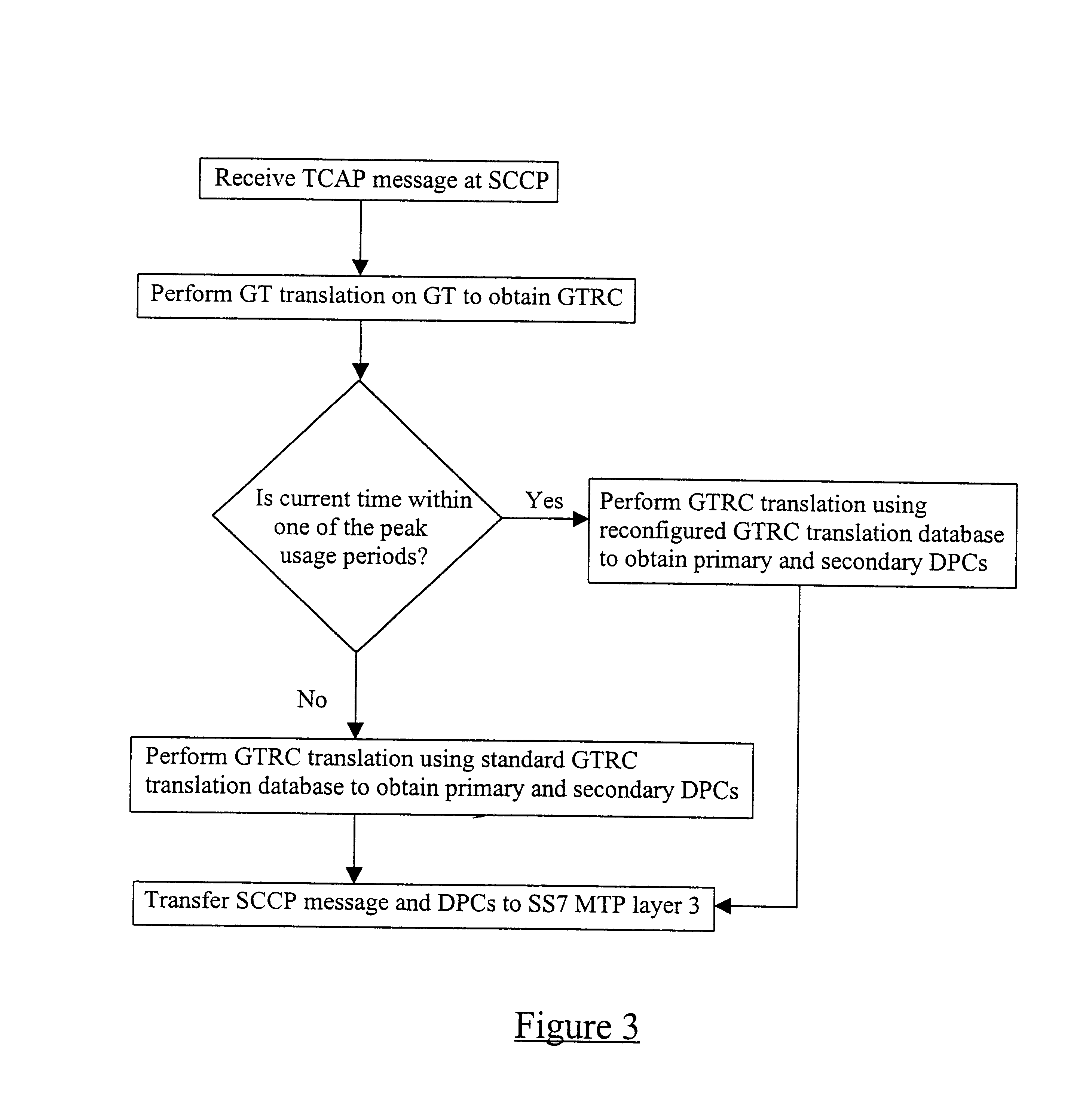Telecommunications network congestion
a technology for telecommunications networks and congestion, applied in data switching networks, frequency-division multiplexes, instruments, etc., can solve the problems of loss of signalling information, inability to provide signalling information, and large volume of signalling traffic on certain routes, so as to avoid or mitigate congestion. the effect of congestion
- Summary
- Abstract
- Description
- Claims
- Application Information
AI Technical Summary
Benefits of technology
Problems solved by technology
Method used
Image
Examples
Embodiment Construction
A conventional Signalling System no.7 (SS7) protocol stack has been described above with reference to FIG. 1. In particular, the Signalling Connection and Control Part (SCCP) has been described including its role in transforming Global Titles (GTs) into Destination Point Codes (DPCs) via Global Title Routing Cases (GTRCs).
FIG. 2 illustrates a mobile telecommunications network comprising a Gateway Mobile Switching Centre (GMSC) 1 which provides a gateway into and out of the mobile network for "foreign" networks. The GMSC 1 is connected directly to a pair of Mobile Switching Centres (MSCs) 2,3. One of these MSCs 2 is connected directly to a Home Location Register (HLR) 4, whilst the other of the MSCs 3 is connected indirectly to the HLR 4 via a third MSC 5. Each of the MSCs, GMSC, and HLR can be considered a Signalling Point (SP) for signalling traffic being transmitted over the network between peer application or user parts (e.g. ISUPs, TCAPs etc).
Each of the SPs of the network of FI...
PUM
 Login to View More
Login to View More Abstract
Description
Claims
Application Information
 Login to View More
Login to View More - R&D
- Intellectual Property
- Life Sciences
- Materials
- Tech Scout
- Unparalleled Data Quality
- Higher Quality Content
- 60% Fewer Hallucinations
Browse by: Latest US Patents, China's latest patents, Technical Efficacy Thesaurus, Application Domain, Technology Topic, Popular Technical Reports.
© 2025 PatSnap. All rights reserved.Legal|Privacy policy|Modern Slavery Act Transparency Statement|Sitemap|About US| Contact US: help@patsnap.com



